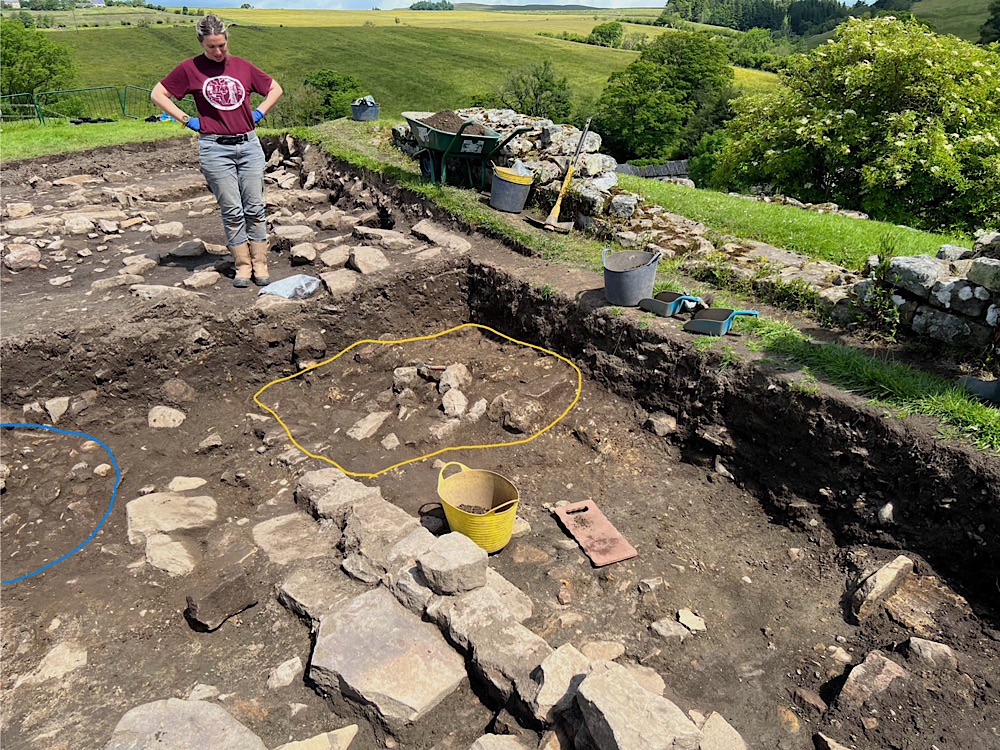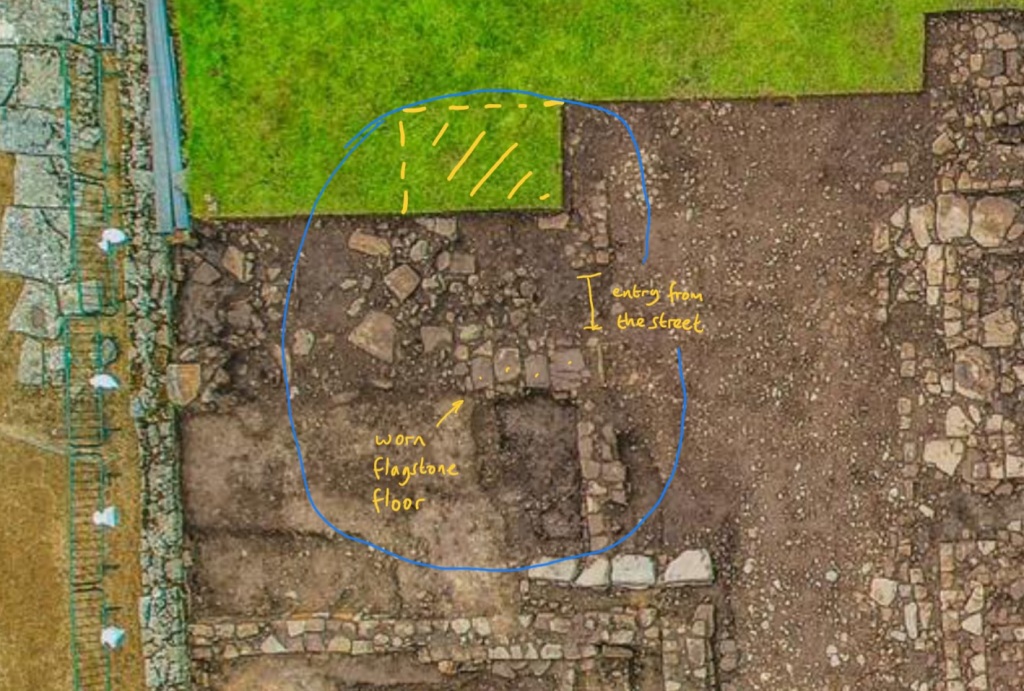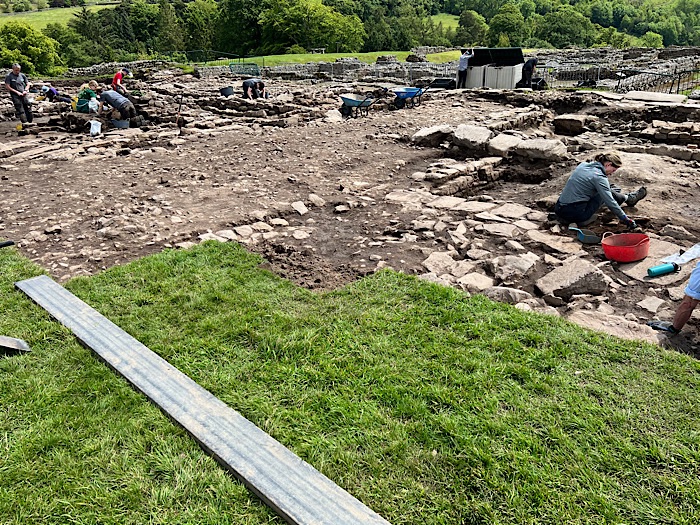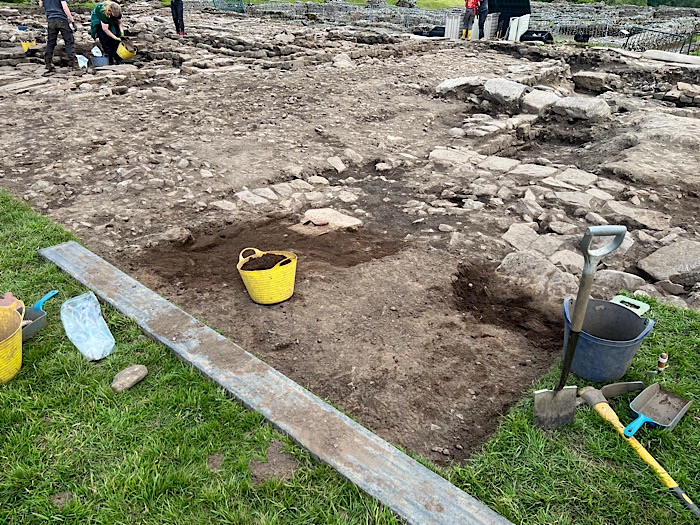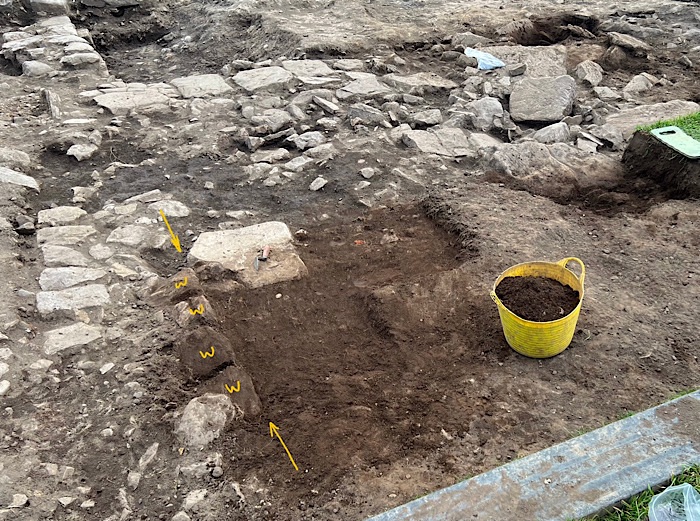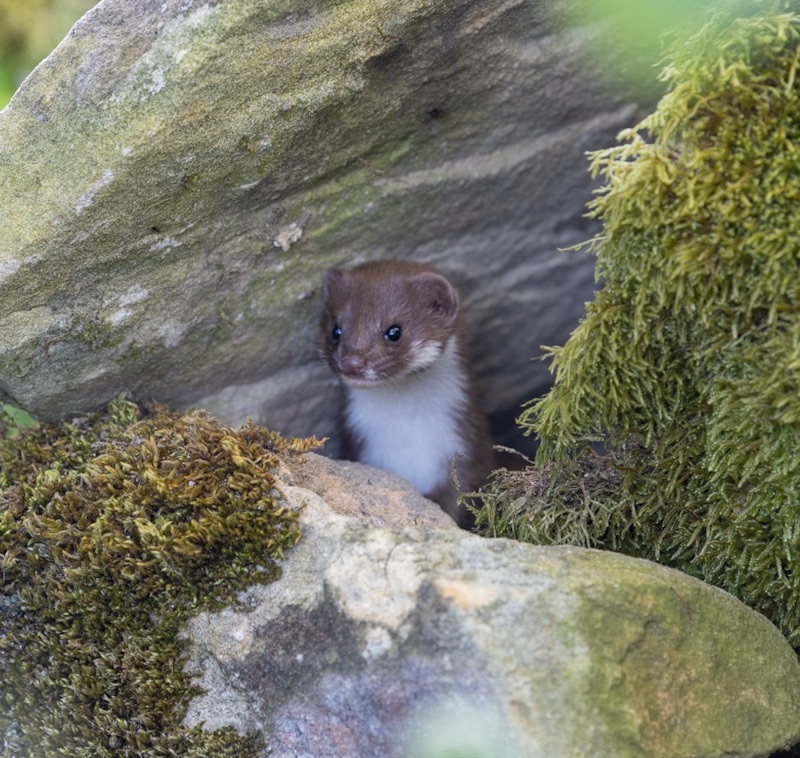Some days, things just go your way. As Day 7 dawned I was still to register a small find, but since then my luck has changed and this morning I hit one of my hottest ever streaks.

For me, this was perfect digging weather: 60F/15C and sunny, with wind gusting to 20mph. Plenty warm enough for a T-shirt, as long as you were active. Low, fluffy white clouds cast fleeting shadows over the trench, empty soil buckets went flying, but the midges were grounded. Some brief showers after lunch were annoying, but despite forgetting my rain jacket the rain didn’t dampen the spirits.
Pippa and I began the day trying to finish off the last of our sweep across the 3rd century barrack room. Within a few trowel scrapes of starting, a circle of that characteristic, copper-alloy green appeared, poking just above the surface. It went deep enough that I had to excavate around it for a minute before it finally was revealed: a perfect cylinder, about 3cm across and 1cm high, with an opening on one of the two sides. Andy described it as likely to be a decorative collar, where a wooden shaft of some kind would have been inserted.

Within a few minutes of returning the “staff of distinction” I had a small iron sheet, of unknown function. No sooner had this been logged when my next set of trowel scrapes turned up another object, unfortunately in the class of unmentionables. Three unrelated small finds in less than 20 minutes, and my first soil bucket was still not even half full!
Unfortunately, the mother lode in the southeastern corner of the room was now exhausted and I had to turn my attention to the strange set of wall-like lines of stone running in an east-west direction not far from my oven. None of them seems completely convincing but were apparently created during 4th century remodeling of a partition wall from the 3rd century barrack. My brief was to find and follow the 3rd century barrack wall lying beneath. This turned out to be tougher than expected, but by digging more deeply, multiple, very solid and well-laid stones typically used in 3rd century walls eventually appeared.

The afternoon was spent tackling “my” oven. Once the large, 4th century flagstone was removed it was very clear that this was indeed an oven: extensive areas of burned clay lay beneath. Within the burned material I also had another small find – a copper alloy cylinder similar to the first, but hollow, narrower in diameter and longer than the first.
After extensive brushing of the entire room, as well as tidying the wall around the oven, it was time for Marta to make a 3D model of the space. I also made my own model, which is available here. Some sampling of the burned material still needs to be done tomorrow, along with further troweling of some new stones within the oven that emerged today.




























